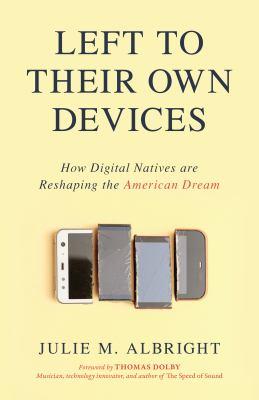
Left to their own devices : how digital natives are reshaping the American dream
Available Copies by Location
| Location | |
|---|---|
| Victoria | Checked out |
Browse Related Items
- ISBN: 9781633884441
-
Physical Description
print
368 pages : illustrations ; 24 cm - Publisher [Place of publication not identified] : [publisher not identified], 2019.
Content descriptions
| Bibliography, etc. Note: | Includes bibliographical references. |
Additional Information

Left to Their Own Devices : How Digital Natives Are Reshaping the American Dream
Click an element below to view details:
Summary
Left to Their Own Devices : How Digital Natives Are Reshaping the American Dream
"Digital natives" are hacking the American Dream. Young people brought up with the Internet, smartphones, and social media are quickly rendering old habits and norms a distant memory, creating the greatest generation gap in history. In this eye-opening book, digital sociologist Julie M. Albright looks at our device-obsessed society, and the many ways in which the post World War II American Dream is waning for the Millennial generation. Albright notes that in the former age of traditional media (dominated by three major TV networks and the national print media), values were more harmonized and time, synchronized. Today, with a deluge of information available 24/7, we are experiencing a sort of digital tribalism, with people coalescing inside of increasingly fragmented informational echo chambers. Digital media allows bad actors to enlarge the rifts between these siloed tribes in divide-and-conquer fashion, frothing up fears by propagating fake news and fake people online. What are other effects of hyper-connectivity coupled with disconnection from stabilizing social structures? Albright sees both positives and negatives. On the one hand, mobile connectivity has given "digital nomads" the unprecedented opportunity to work or live anywhere. On the other hand, new threats are emerging, including cyberbullying and the ability to radicalize marginalized youth, decreased physical exercise, increased isolation, anxiety and loneliness, ephemeral relationships, fragmented attention spans, lack of participation in community activities and the political process, and detachment from the calm of nature or the refuge of religion. In this time of rapid, global, technologically driven change, this book offers fresh insights into the effects of always-on devices on the family, community, business, and society at large.


